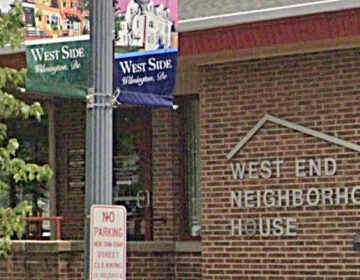A workspace that tracks the Millennial creative process

KieranTimberlake offices, Northern Liberties, Philadelphia (Bas Slabbers/for NewsWorks)
“[Millennials] are a generation of workers that have learned to work in different kinds of spaces through their education and life …. When they come to an office that has set patterns, it limits their creativity. We’re trying to say this workspace is no different from the place you learned. Discovery can happen seamlessly.”
In your work day, do you have the freedom to choose where you want to complete your tasks? Do you have a space where you could be creative, brainstorm, and begin to make an idea real?
That could look any number of ways, depending on your age, background and work sphere. But if you’re a Millennial — part of the generation coming into power now that will soon form the majority of the workplace — there’s a good chance your patterns of work are mobile, beginning with that morning coffee.
Of course there have always been creative ways to start the day with a cup of joe and a notepad — an early mobile tablet. I spent an embarrassing number of early-morning hours in the cafeterias of student centers and college libraries. But the growth of BYOC (bring your own computer) cafés has coincided with the rise of wi-fi and on-the-go laptops to allow Millennials a lot flexibility in managing their workday.
It’s that creative workday that the architectural firm KieranTimberlake, whose new digs in Northern Liberties were profiled last week, seeks to make available.
Mobility, creativity
“[Millennials] are a generation of workers that have learned to work in different kinds of spaces through their education and life, and they bring that here,” Timberlake says. “When they come to an office that has set patterns, it limits their creativity. We’re trying to say this workspace is no different from the place you learned. Discovery can happen seamlessly.”
Steve Kieran says he sees a lot of his employees starting their workday in the office kitchen, with its wide space, long tables and plenty of chairs.
From there, you can move to your desk, or stop by a colleague’s desk, or meet up at any of the circular tables punctuating the upstairs open workspace.
If you need visuals, you can grab a marker and sketch something out on one of several white-board walls.
And if you need to go three-dimensional, you can move down to the prototype room, formerly a loading dock from this building’s past life as a bottling plant for Ortlieb Brewery. Now enclosed and unstructured, with all kinds of raw materials and light, you can work with a team to build your idea and see how it works in real life.
“One of the critical things we’re working on is getting staff to prototype more,” James Timberlake says, “so there’s a seamless relationship between a line on paper and an artifact under construction. The fact that they’re 50 steps from a shop where they can visualize it actually from what they were working on at the desk.”
A learning curve for freedom
The space supports a dynamic production process, and I would have expected everyone to take to it like a duck to water. Most do, but we human-folk also like to stick to what we know. There’s a learning curve to such a natural work environment.
“The most interesting dynamic in an office about collaboration is the fact that the more change you offer people, the less they really want to change,” Timberlake observes.
“Workers move as part of their team, but we’re working to get them to use the office fully in its capabilities,” he adds. “They’re currently reverting in these first weeks after we’ve moved to things they know, rather than things they have yet to discover. But that’s natural — it takes time for that to evolve. We’re trying to get them to step out of the boundaries they knew before.
“Philosophically, it’s the freedom to design the way you work. Thinking about the building as a platform to enable that total freedom is what we’re after. We’ve probably only tapped into a fraction of what’s possible.”
It makes sense that an architectural firm might be set up for such possibilities. Most office settings — including the 18th- and early-20th-century buildings in which I work — have different constraints and call for different adaptations. But a trip through the KieranTimberlake building offers an idea of what things can be like.
WHYY is your source for fact-based, in-depth journalism and information. As a nonprofit organization, we rely on financial support from readers like you. Please give today.




